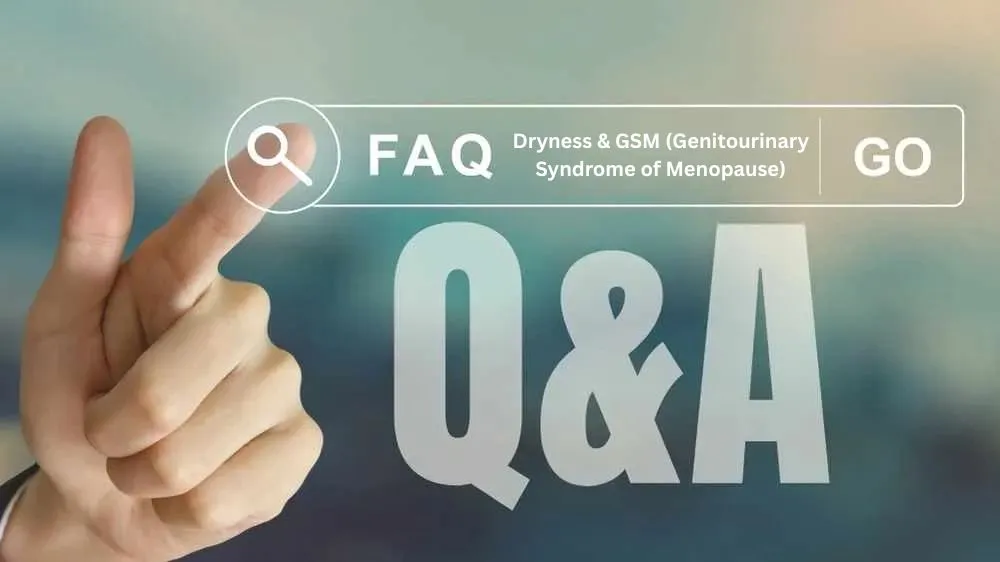How many sessions are typical and how far apart?
How many sessions are typical and how far apart? Most clinics plan a short series of 2–3 vaginal laser or radiofrequency sessions spaced about 4–8 weeks apart, then review at 6–12 months for possible maintenance. Exact schedules vary with symptoms, device, and response, and energy treatments come after foundations such as moisturisers, suitable lubricants and—when needed—local vaginal oestrogen or DHEA. Educational only. Results vary. Not a cure.
Detailed Medical Explanation
How many sessions are typical and how far apart? For energy-based treatments (fractional CO2/Er:YAG lasers or radiofrequency) used for genitourinary syndrome of menopause (GSM), many clinics schedule an initial series of 2–3 sessions separated by around 4–8 weeks, followed by a maintenance review at 6–12 months. This spacing allows time for heat-triggered tissue remodelling—early soothing of the “sandpaper” feeling with walking or cycling, fewer vestibular micro-tears, and gradual comfort gains with intimacy. Because evidence quality is mixed and devices differ, plans are personalised and reviewed against symptoms, goals and any co-existing issues (e.g., pelvic floor over-activity, BV/UTIs, or dermatological conditions like lichen sclerosus).
Why spacing matters. Energy devices aim to stimulate a controlled wound-heal response—collagen and elastin remodelling and improved blood flow in the vaginal epithelium/submucosa. This biology unfolds over weeks, so crowding sessions rarely speeds outcomes and may increase irritation risk. Leaving 4–8 weeks between visits helps the tender entrance (vestibule/posterior fourchette) settle and lets you judge real-world changes—less stinging on urine contact, easier speculum tolerance, reduced dyspareunia—before deciding on the next step.
How we sequence care. In a guideline-led pathway, we build from foundations before devices. Start with non-hormonal measures: scheduled vaginal moisturiser (many prefer hyaluronic acid gels) 2–4 times weekly for day-to-day hydration, and a compatible personal lubricant for higher-friction moments (water-based for versatility and condoms; silicone-based for long-lasting glide if the entrance is tender; oil-based feels rich but may degrade latex condoms/toys). If dryness, dyspareunia or urinary urgency/frequency persist, add a local hormonal option—vaginal oestrogen (cream, tablet/pessary, ring) or vaginal DHEA—because these target the low-oestrogen tissue biology of GSM directly. Only then do we discuss energy devices if symptoms remain intrusive or hormones are unsuitable/declined. For a step-by-step overview, see how treatments are sequenced and what a session involves under what treatment involves.
What improvement usually looks like. When energy-based care helps, people often describe easier glide at initial penetration, fewer superficial fissures, calmer day-to-day movement, and less “paper-cut” sting at the entrance. If your main barrier is pelvic floor guarding (a protective tightening after painful experiences), progress may plateau without pelvic health physiotherapy and, where helpful, graded dilator work—devices can’t relax muscles. Likewise, if thrush/BV/UTIs or contact dermatitis are active, those need addressing so results aren’t masked.
Personalising the number of sessions. Two sessions can be sufficient for lighter symptoms; three may be planned when dryness and micro-tears have been long-standing. Some choose a top-up at 6–12 months; others maintain comfort with foundations and local therapy alone. If you don’t see meaningful change after the second session, pause and reassess diagnosis (e.g., vestibulodynia, dermatoses), product placement (is the entrance being treated?) and co-drivers (cycling friction, tight kit, perfumed products).
Safety and UK regulation. Devices used should be UKCA/CE-marked for their intended use and operated by trained clinicians with clear consent and aftercare. Common, usually short-lived effects include warmth, spotting or soreness. Red flags—fever, malodorous green/grey discharge, heavy bleeding, severe pelvic pain, visible blood in urine, or any new post-menopausal bleeding—need prompt review. For device oversight principles, see the UK regulator’s pages. Timelines and dosing are adjusted for recent surgery, pacemakers/implants (device-specific), pregnancy, or active infections/dermatoses.
Costs and planning. Packages often reflect the standard 2–3-session series, with optional maintenance. If you’re budgeting, ask for a written plan showing proposed session count/spacing and what’s included (reviews, aftercare, product support). Our pricing overview can help you compare options and decide whether a maintenance visit is likely for your goals.
Clinical Context
Who might suit 2 sessions vs 3? If GSM symptoms are milder (mainly dryness with occasional stinging), two sessions spaced 4–8 weeks apart may suffice. Long-standing dyspareunia with recurrent vestibular micro-tears often leads to a three-session plan. People who can’t use local hormones sometimes consider a third session to consolidate gains, though decisions are individual.
Who should avoid or delay sessions? Anyone with red flags (fever, severe pelvic pain, malodorous discharge, visible haematuria, new post-menopausal bleeding), active BV/thrush/UTI, recent pelvic surgery without clearance, suspected lichen sclerosus without diagnosis, unmanaged pelvic floor over-activity, pregnancy, or device-specific contraindications (e.g., certain implants for RF). Treat active problems first, then revisit timelines.
Next steps. Optimise foundations, confirm diagnosis, and set review points (typically 6–12 weeks after each step). If progress stalls, rethink the differential rather than extending sessions automatically. Aim for the lowest effective maintenance once comfortable.
Evidence-Based Approaches
NHS & NICE framing. Patient-friendly advice on symptoms and self-care appears on the NHS page for vaginal dryness. The NICE Menopause Guideline (NG23) recommends non-hormonal measures first (vaginal moisturisers and suitable lubricants), then considering low-dose local vaginal oestrogen when GSM affects quality of life. Energy devices are not first-line and should be considered only after guideline-led options.
Regulation. UK device oversight and vigilance are handled by the national regulator; see principles for medical devices on the MHRA pages, including expectations for intended use, consent and safety reporting.
Comparators with stronger evidence. Systematic reviews in the Cochrane Library show that local vaginal oestrogens improve dryness, soreness, dyspareunia and vaginal pH versus placebo across creams, tablets/pessaries and rings. Peer-reviewed overviews indexed on PubMed explain GSM mechanisms (thinner epithelium, raised pH, reduced lactobacilli) and why local therapies are foundational, with energy devices as evolving adjuncts.
Applying the evidence: Use a stepped plan—foundations → local therapy if needed → consider energy treatment only when appropriate, with transparent discussion of session number, spacing and maintenance. Internal links: practical overviews of how care is sequenced and a guide to treatment prices are available for planning. ® belongs to its owner.
